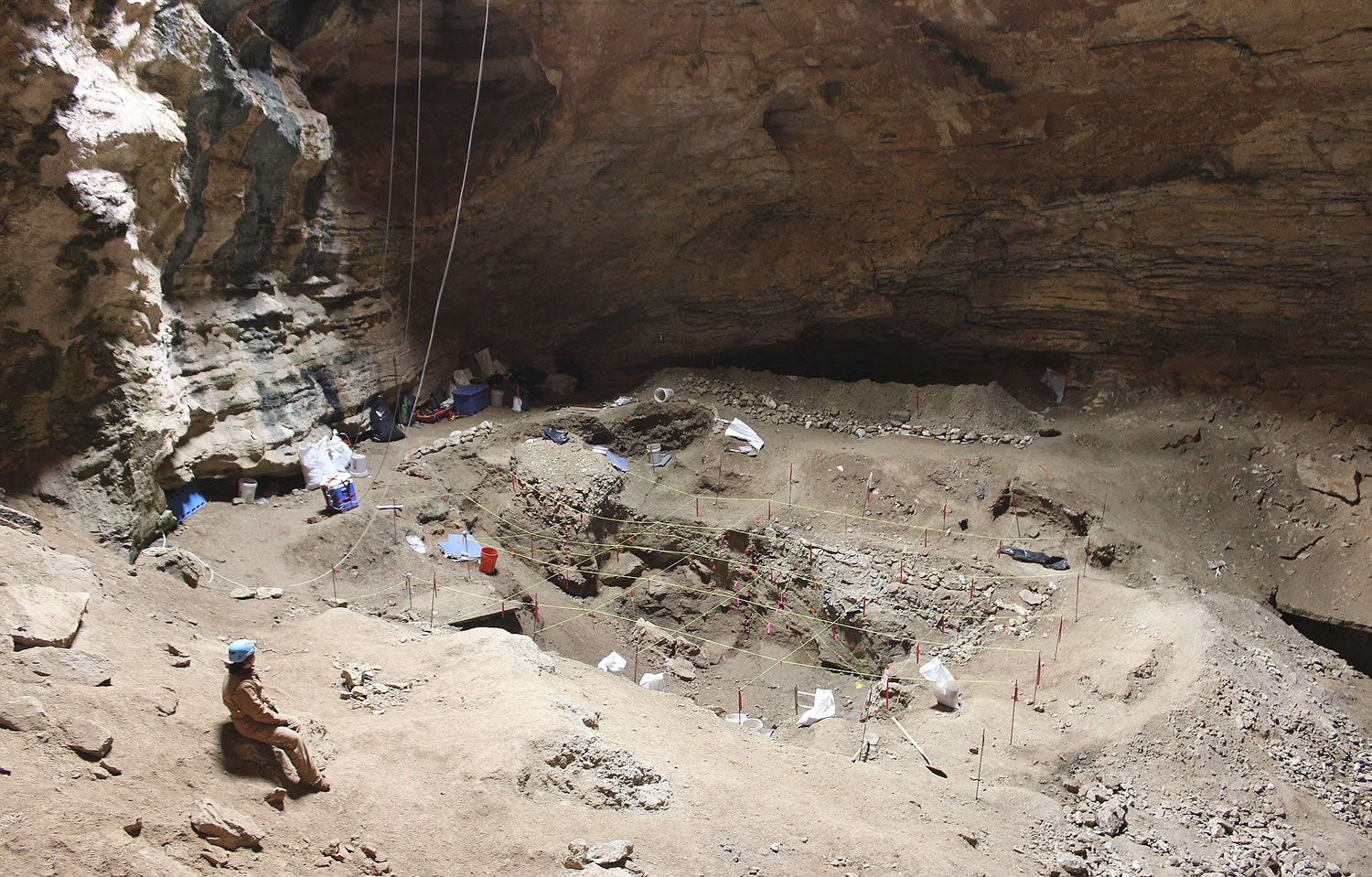CHEYENNE, Wyo. — A strange Wyoming cave eight stories deep continued to give up secrets as paleontologists for a second summer in a row dug and sifted through a subterranean boneyard of animals that fell in around the peak of the last ice age some 20,000 years ago.
Natural Trap Cave on the western slope of the Bighorn Mountains is a treasure trove for researchers brave enough to rappel into the chilly, dank chamber. To date, they’ve found the remains of horses, cheetahs, mammoths, camels and other species now gone from North America.
One question they still hope to answer: Did a warming climate or perhaps the arrival of people cause the continent’s biodiversity to decline starting around 14,000 years ago?
“Basically what happened at the end of ice age is we had this massive extinction event. But nobody is really sure what caused it,” said paleontologist Julie Meachen at Des Moines University.
One of Meachen’s more exciting finds this year wasn’t a big mammoth or cat but the crushed skull of a coyote. The skull might contain genetic material she hopes to compare to the coyotes that still roam northern Wyoming.
Co-principal investigator Alan Cooper at the University of Adelaide in Australia already has analyzed genetic material from the bones of camels and American lion recovered from the cave.
Natural Trap Cave’s only entrance is a 15-foot-wide hole at the surface. Over thousands of years, countless animals fell into the hole and plunged 80 feet to their deaths.
Nowadays, the U.S. Bureau of Land Management keeps the entrance closed off with a locked metal grate. The BLM allows people inside only rarely.
Before last year, no paleontological work had taken place in the cave in more than 30 years. Last year, just figuring out how to work in the cave — setting up rigging to haul buckets up and down, for example — consumed much of their two weeks at the site.
This year, scientists were able to work in the cave close to four weeks before wrapping up in the first week of August.
“This year it moved on to a whole different level. The level of expertise, the thoroughness of the excavation, the documentation, was top-notch,” said Brent Breithaupt, regional paleontologist for the BLM who has been coordinating logistics.
Details beginning to emerge include a curiously high ratio of carnivores such as cheetahs and wolves to herbivores such as horses and bighorn sheep.
“Maybe the carnivores are jumping in because they could smell the rotting herbivores down there. I don’t know. It’s a thought and something to consider,” Meachen said.
Though the cave has lots of carnivore remains, the coyote skull was a rare find that excites Meachen because scientists know little about coyotes from back then.
“Coyotes actually looked different in the Pleistocene than they do today. They were bigger. They were more carnivorous. They probably took larger prey,” Meachen said. “What I want to see is if there were genetic changes that went along with those morphological changes.”
Also, researchers are beginning to suspect animals fell into the cave through additional, smaller holes that used to exist at the surface. Excavations this year uncovered bighorn sheep and horse parts some distance away and uphill from the zone underlying the current entrance, Meachen said.
The scientists have funding for one more season of work at the cave but are optimistic they can carry on for a season or two afterward, she said.



